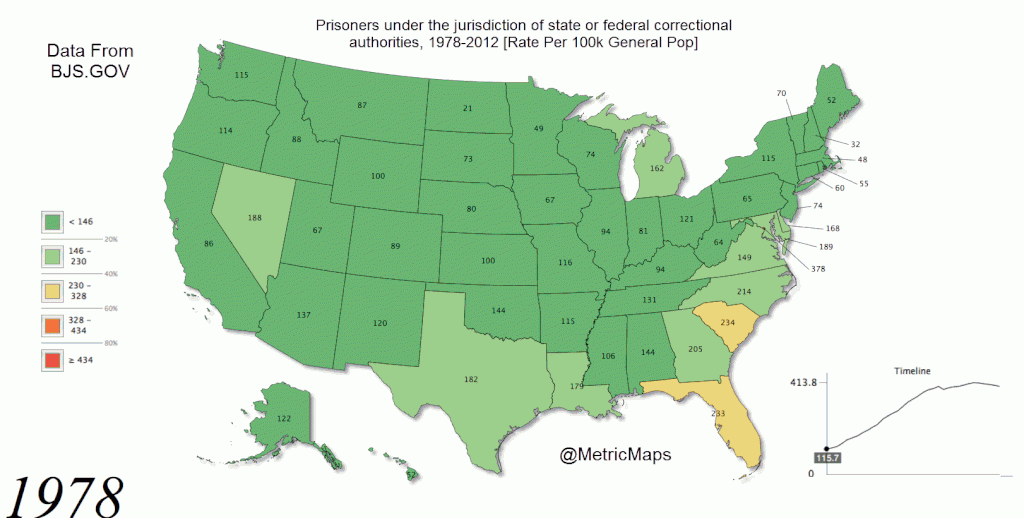It’s not news that the United States is the incarceration capital of the world: The 2.4 million people behind bars in the U.S. today is, as Matt Ford at The Atlantic noted, “more than the combined population of 15 states, all but three U.S. cities, and the U.S. armed forces.” As Adam Gropnik wrote in hiscompelling 2012 piece, “The Caging of America”:
Mass incarceration on a scale almost unexampled in human history is a fundamental fact of our country today — perhaps the fundamental fact, as slavery was the fundamental fact of 1850.
Shadows of slavery loom over today’s mass-incarceration boom, as singer John Legend brought to the attention of a national audience in his acceptance speech at the 2015 Oscars. They are cast by two defining features of our carceral state: the immense racial disparities in who gets sent to jail and prison, and the unique regional roots of mass incarceration in the South.
As Michelle Alexander argued in her pioneering book “The New Jim Crow,” incarceration has long been linked to social and racial control. After the Civil War, for example, Southern states passed new laws — and resurrected old ones — that cracked down on vagrancy, loitering and other minor offenses, often targeting African-Americans. The South’s prison population, especially of African Americans, skyrocketed: In Georgia, incarceration jumped fourfold between 1868 and 1908; in North Carolina, the prison population jumped from just 121 people in 1870 to 1,302 by 1890.

